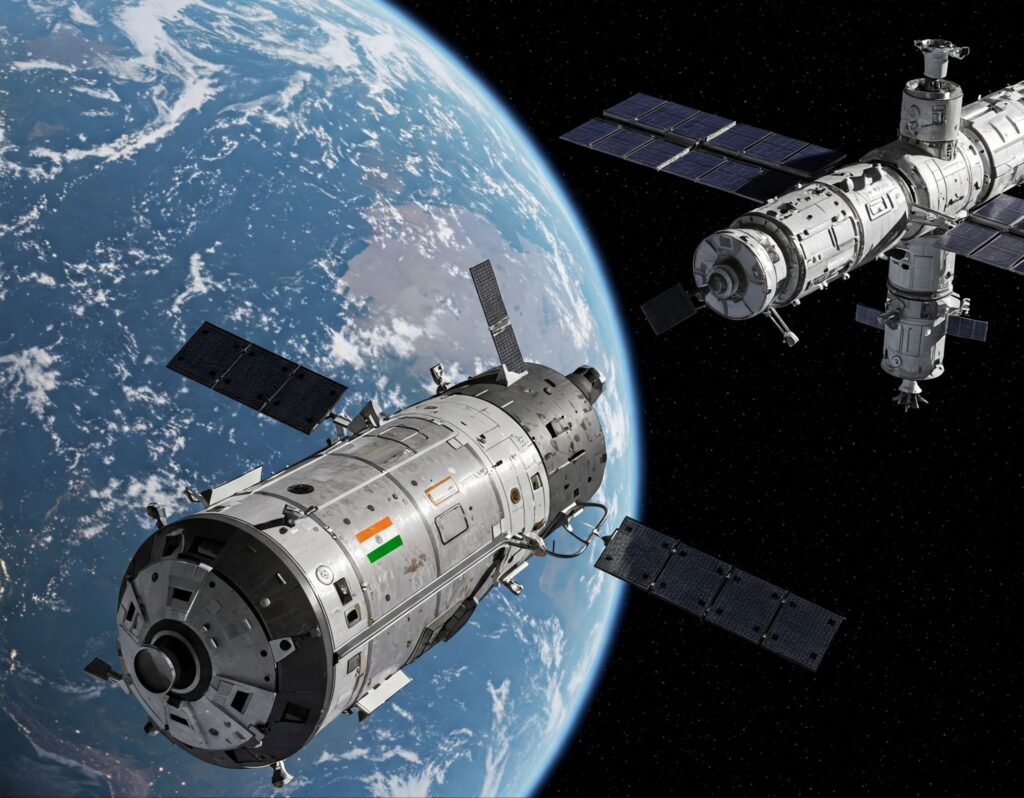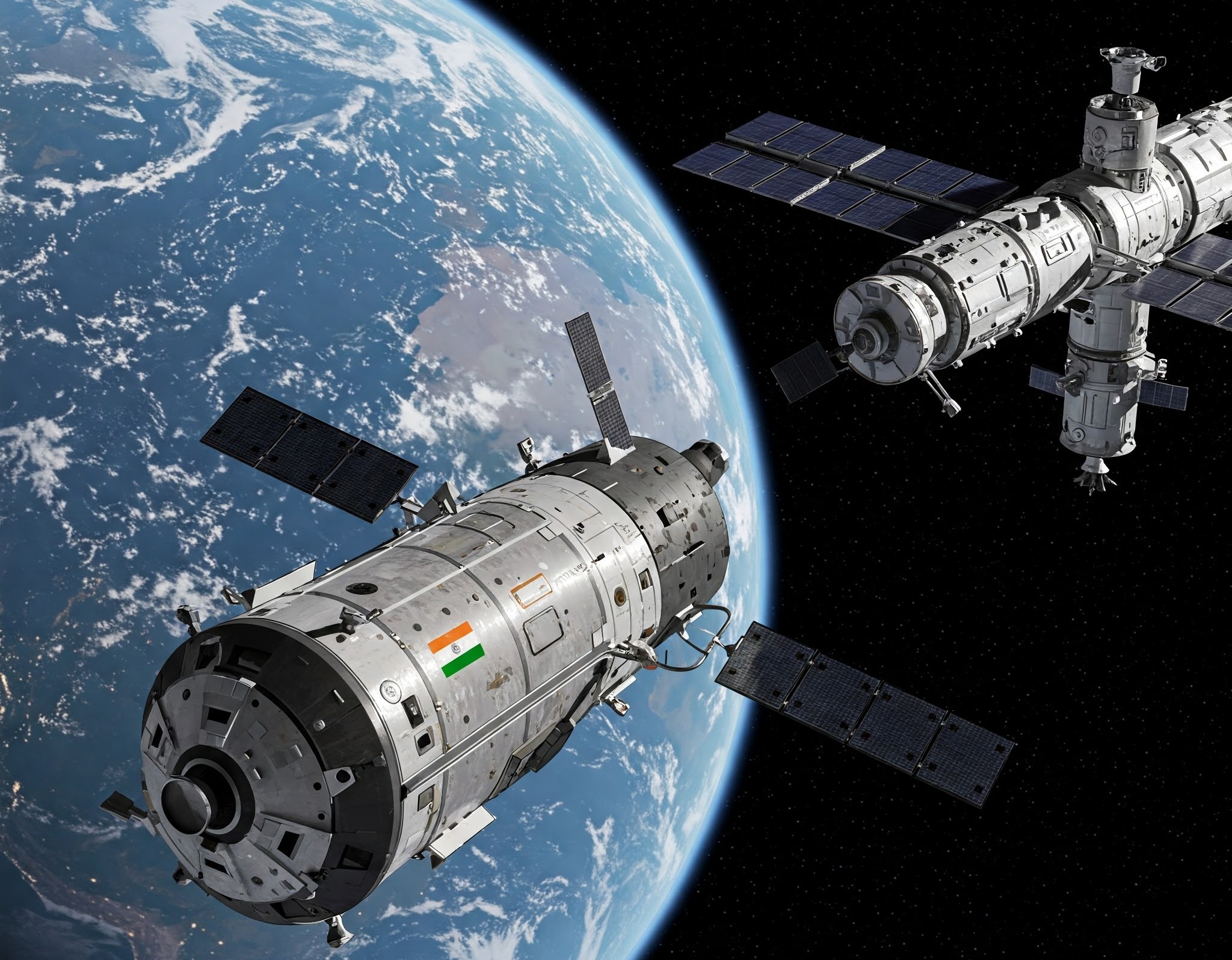In a milestone achievement for the Indian Space Research Organisation (ISRO), India has successfully executed its first in-space docking mission under the Space Docking Experiment (SpaDeX). This historic event, which took place on January 15, 2025, marks India as the fourth country globally, after the United States, Russia, and China, to demonstrate this sophisticated space technology.
The SpaDeX mission involved two satellites, SDX01 (Chaser) and SDX02 (Target), launched on December 30, 2024. These satellites, each weighing approximately 220 kilograms, were deployed into low Earth orbit where they demonstrated autonomous docking and undocking capabilities, a critical technology for future space operations like assembling space stations and conducting crewed missions. The successful docking is not just a technical showcase but a strategic leap towards India’s expansive space ambitions.

ISRO’s Future Plans: A Gateway to New Frontiers
Human Space Missions – Gaganyaan:
India’s immediate horizon includes the Gaganyaan mission, aimed at sending Indian astronauts into space by 2025. This mission will leverage the technologies tested during SpaDeX, particularly for crew transfer, resupply, and potential emergency evacuations. The success of SpaDeX is thus seen as a direct precursor, enhancing the safety and operational flexibility of Gaganyaan.
Chandrayaan-4:
Following the triumphs of Chandrayaan-3, ISRO is gearing up for Chandrayaan-4, a mission planned around 2027 to retrieve and bring back samples from the Moon’s south pole. The docking technology will be crucial here, ensuring that the sample capsule can rendezvous and dock with a return spacecraft for the journey back to Earth. This mission not only adds to the scientific understanding of lunar geology but also positions India at the forefront of lunar exploration.
Venus Exploration – Shukrayaan:
ISRO has also set its sights on Venus with the Shukrayaan mission, scheduled for 2028. This will be India’s first mission to Venus, focusing on the planet’s atmosphere and surface. Although docking isn’t directly involved, the success of SpaDeX underscores ISRO’s growing competence in managing complex missions, which is vital for interplanetary exploration.
Bharatiya Antariksh Station:
Perhaps the most ambitious post-SpaDeX project is the Bharatiya Antariksh Station (BAS), with plans to have it operational by 2035. The station will be assembled in space, requiring multiple docking operations to connect its modules. The SpaDeX mission’s success is a foundational step towards this goal, providing the technological backbone for such a complex assembly in space.
Economic Implications:
The advancements in space technology are not only about exploration but also significantly contribute to India’s economic growth. According to a 2024 report by the Economic Diplomacy Division, India’s space sector is poised to reach a market value of $44 billion by 2040, driven by both government and burgeoning private sector involvement.
Job Creation and Skill Development: The SpaDeX mission and subsequent projects are expected to create numerous high-skill jobs in areas like aerospace engineering, robotics, and data analysis, aligning with India’s push towards skill development, as evidenced by its ranking in the QS World Future Skills Index 2025.
Commercial Opportunities: The success in space docking opens avenues for commercial satellite services, including satellite servicing in orbit, which could become a lucrative sector. ISRO’s focus on cost-effective missions also makes it an attractive partner for international collaborations, potentially increasing foreign investments in India’s space industry.
Technological Spin-offs: The technologies developed for space missions have numerous civilian applications, from improving telecommunications to advancing medical diagnostics through microgravity research.
Global Positioning: By mastering docking technologies, India not only enhances its global standing in space science but also positions itself as a key player in the international space economy, which is projected to reach $1 trillion by 2030.
Conclusion:
The SpaDeX mission’s success is a testament to India’s growing prowess in space technology, paving the way for ambitious future projects. It reflects not only ISRO’s technical capabilities but also the strategic foresight in leveraging space exploration for national development. As India continues to invest in its space program, the ripple effects on the economy, education, and international relations are set to amplify, making space a new frontier for India’s growth story.







0 Comments